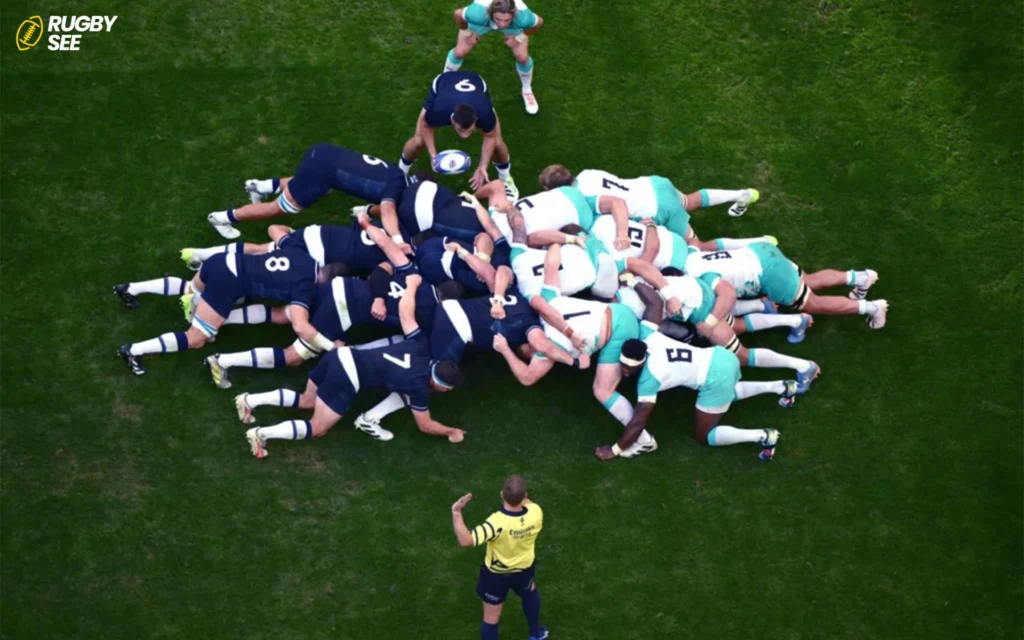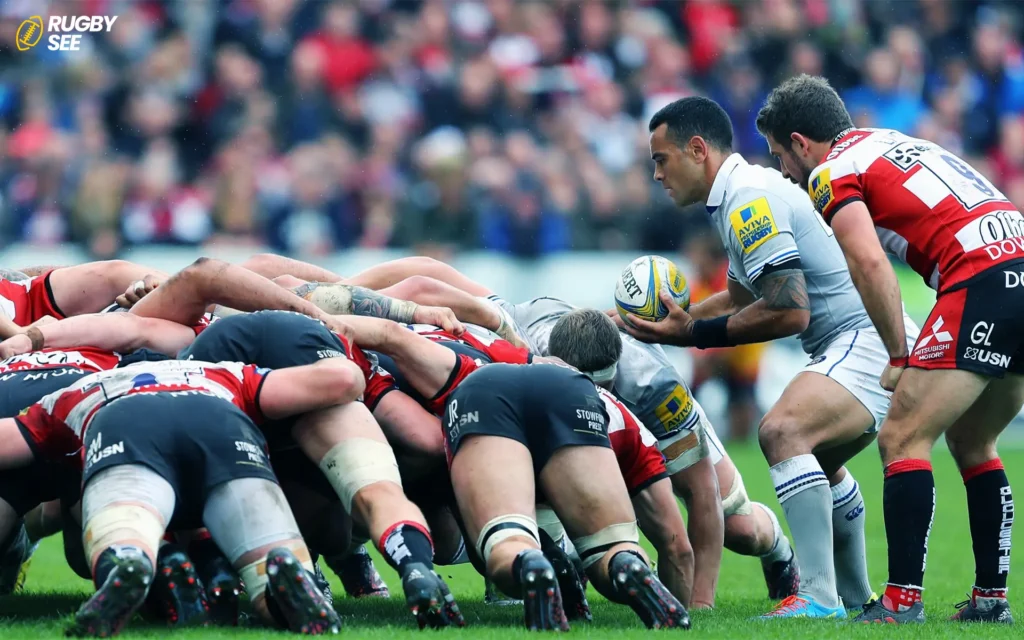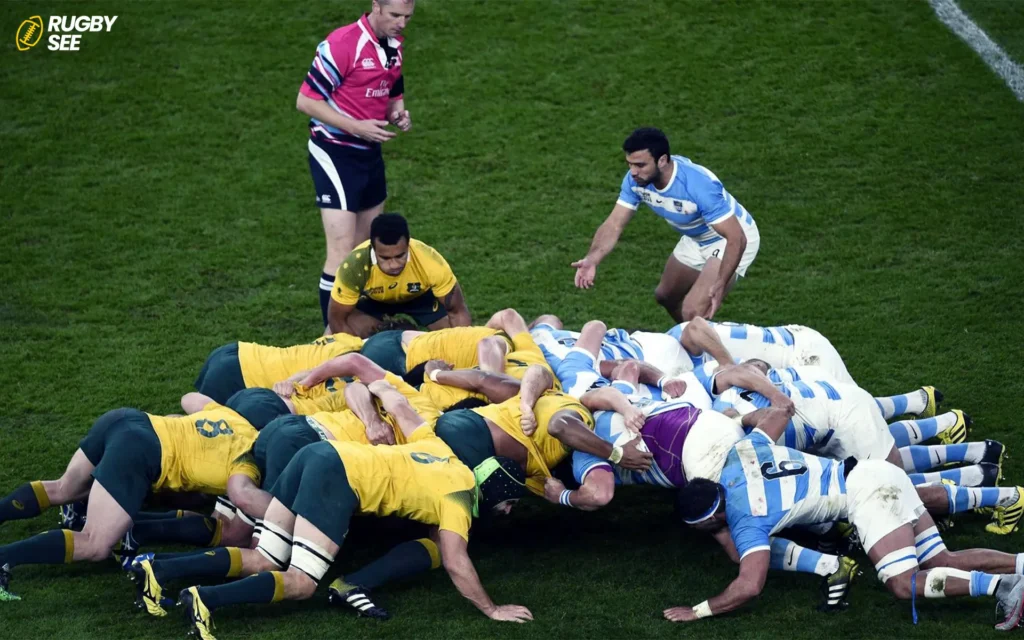In the fast-paced world of rugby, the scrum stands out as a pivotal moment where power, strategy and skill converge. Winning a scrum can change the momentum of the game and give the winning team possession and a psychological advantage. But what does it take to master this important aspect of rugby? This Rugbysee article looks at the techniques, preparation and teamwork required to win a scrum, providing players and teams at all levels with practical insights to improve their performance.
Understanding the Scrum
A scrum is a method of restarting play in rugby, involving players packing closely together with their heads down and pushing against their opponents to gain possession of the ball. This contest of power and technique is more than just a physical battle; it’s a chess match that requires intelligence, coordination, and sheer will.
The Basics of Forming a Scrum
- Front Row: Consists of two props and a hooker. The props support the hooker, who aims to hook the ball back to their team.
- Second Row: Two locks provide the main pushing power, binding tightly with each other and the front row.
- Back Row: Includes two flankers and a number eight, who add weight and control the scrum’s stability and direction.

Key Strategies for Winning a Scrum
Power and Conditioning
Physical strength and endurance are non-negotiable in winning scrums. Teams must focus on a rigorous conditioning program that builds muscle, power, and stamina. Exercises should target the legs, back, and core, which are crucial for generating force in the scrum.
Technique and Coordination
Winning a scrum isn’t solely about brute strength; technique plays a pivotal role. Proper binding, body positioning, and coordination among teammates can maximize the force applied against the opposition. Regular practice sessions focusing on scrum setups and live drills are essential for honing these techniques and if you want to know more about Rugby League read What is the Point of a Scrum in Rugby League?
Communication and Timing
Effective communication before and during the scrum helps synchronize the team’s effort. Calls should be clear and concise, ensuring that all players engage simultaneously to maximize their collective power.
Analyzing the Opponent
Understanding the opponent’s scrumming technique can provide a strategic advantage. Teams should study footage of their opponents’ past matches to identify weaknesses or tendencies in their scrum approach, adapting their strategy accordingly.
Mental and Psychological Aspects
Confidence and mental toughness are crucial in scrum situations. Teams must cultivate a mindset of dominance and resilience, believing in their ability to win each scrum contest. Psychological preparation, including visualization and mental rehearsal techniques, can enhance performance under pressure.
The Role of the Scrum-Half
The scrum-half plays a vital role in initiating the scrum, feeding the ball accurately into the contest. Their ability to execute a precise and tactical feed can influence the scrum’s outcome, making practice and coordination with the hooker essential.
Continuous Improvement and Adaptation
Rugby laws and scrum techniques evolve, requiring teams to stay informed and adaptable. Continuous learning through coaching, workshops, and analysis of the latest games ensures that teams remain competitive and effective in their scrum strategy.

Advanced Tactics for Scrum Dominance
Beyond the foundational strategies, winning a scrum often comes down to mastering advanced tactics that can provide a competitive edge.
Pre-Engagement Strategies
The moments before the scrum engages are critical. Teams can employ various pre-engagement tactics, such as varying the distance and timing of the engagement, to unsettle their opponents and gain a psychological advantage and if you want to know about Scrum,s rules in Rugby read Understanding the Heart of Rugby: Rugby scrum rules.
The Hooker’s Technique
The hooker’s role is pivotal in winning the scrum. Perfecting the timing of the strike and the direction of the hook can significantly influence the outcome. Advanced hookers may also use feints and variations in strike speed to outwit their opposite number.
Adjusting to the Referee’s Interpretation
Rugby scrum laws are subject to interpretation by the referee. Teams that quickly adapt to a referee’s specific interpretation of scrum engagements and infringements can adjust their tactics to avoid penalties and gain favor in contested situations.
Adaptability and In-Game Adjustments
The ability to adapt in real-time to the unfolding dynamics of a match is a hallmark of successful teams.
Reading the Opposition
Teams must be adept at reading the opposition’s strategy and fatigue levels during the game. Making tactical adjustments, such as changing the point of drive or the binding technique, can exploit weaknesses as they appear.
Weather and Pitch Conditions
Adapting to weather and pitch conditions is crucial. Wet, slippery conditions require adjustments in stance and technique to maintain stability and power. Teams that quickly adapt to these external factors often gain an upper hand in scrums.

The Role of Support Staff
Winning a scrum is not solely the responsibility of the players on the field. The support staff, including coaches, analysts, and physiotherapists, play a significant role in preparing the team.
Video Analysis
Analysts can provide valuable insights through video analysis, identifying patterns in the opposition’s scrum technique and suggesting counter-strategies. This data-driven approach allows for targeted training and strategic planning.
Strength and Conditioning
Physiotherapists and strength and conditioning coaches are essential in developing the physical attributes required for scrum dominance. Tailored conditioning programs that focus on explosive power, endurance, and core stability can give teams a physical edge.
Mental Conditioning
Sports psychologists or mental skills coaches can enhance a team’s psychological preparation, focusing on building confidence, resilience, and focus. Mental toughness is as critical as physical strength in the high-pressure environment of a scrum.
Continuous Learning and Team Culture
Fostering a culture of continuous learning and mutual support is vital for long-term success in scrum dominance.

Peer-to-Peer Learning
Encouraging players to share insights and learn from each other’s experiences can foster a collaborative environment where everyone contributes to improving scrum performance.
Embracing Innovation
Staying open to new techniques, training methods, and tactical approaches can keep a team ahead of the competition. Innovations in sports science and coaching methodologies can provide fresh perspectives on winning scrums.
Winning a scrum in rugby is a multifaceted challenge that encompasses physical strength, technical skill, strategic planning, and mental fortitude. By focusing on comprehensive preparation, embracing a team-centric approach, and continuously seeking improvement, teams can enhance their scrum performance and leverage it as a key to victory on the rugby field.
Remember, the scrum is not just a test of power; it’s a demonstration of a team’s cohesion, resilience, and determination. Mastering the scrum can be a decisive factor in the game’s outcome, reflecting the spirit and strength of the team as a whole.










